Workshop Report: “Water Challenges and Solutions in India with a focus on Urban Water” 31 July – 1 August 2017 Bangalore India

The Divecha Centre hosted a workshop on “Water Challenges and Solutions in India, with focus on Urban Water”, in collaboration with Interdisciplinary Centre for Water Research in IISc and the Sustainable Water Future Programme (Water Future) of Future Earth. The main goal of the workshop was to seek wide-ranging inputs on water challenges and solutions, as a prelude to development of the Water Solution Lab to be hosted in Divecha Centre.
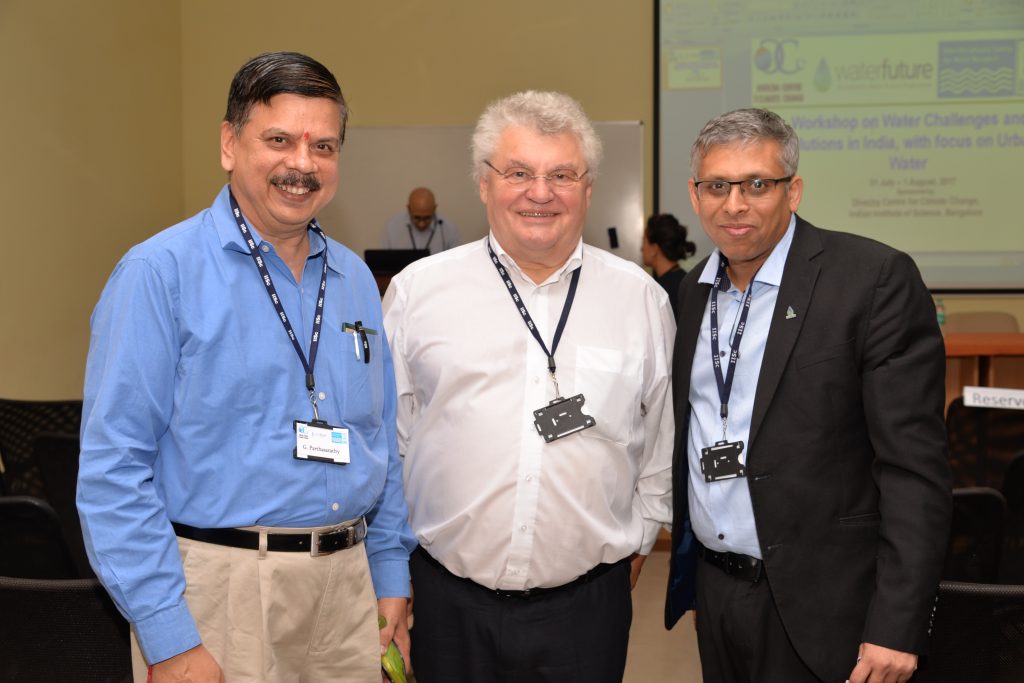
The Water Solution Lab will be a collaborative project, involving IISc and various organizations working on water in Bangalore and elsewhere in India, as well as Water Future and their global network of partners. Its goal will be to address major water challenges being faced by India in a variety of areas, and is motivated by Sustainable Development Goal 6 (“Ensure availability and sustainable management of water and sanitation for all”). The discussions that began with this workshop are aimed at creating a unique institution to solve local problems and increase the number of solution providers in the water sector.
The Future Earth team at the workshop was led by Prof. András Szöllősi-Nagy, who chairs the Sustainable Water Future Programme and UNESCO’s International Hydrological Programme. Szöllősi-Nagy gave an introductory talk showing that the changing global hydrological cycle is leading to more frequent disasters, and pointed out the linkages between climate change and the water cycle. Water Future is interested in many different types of approaches (including big data and modeling), and aims to create a network of Solution Labs that will bridge science and practice and support deman-driven innovation for creating lasting and effective solutions to global water challenges. Prof. Anik Bhaduri from the Water Future program elaborated on the goals of this program and its approach. An important goal is to bring different stakeholders together.
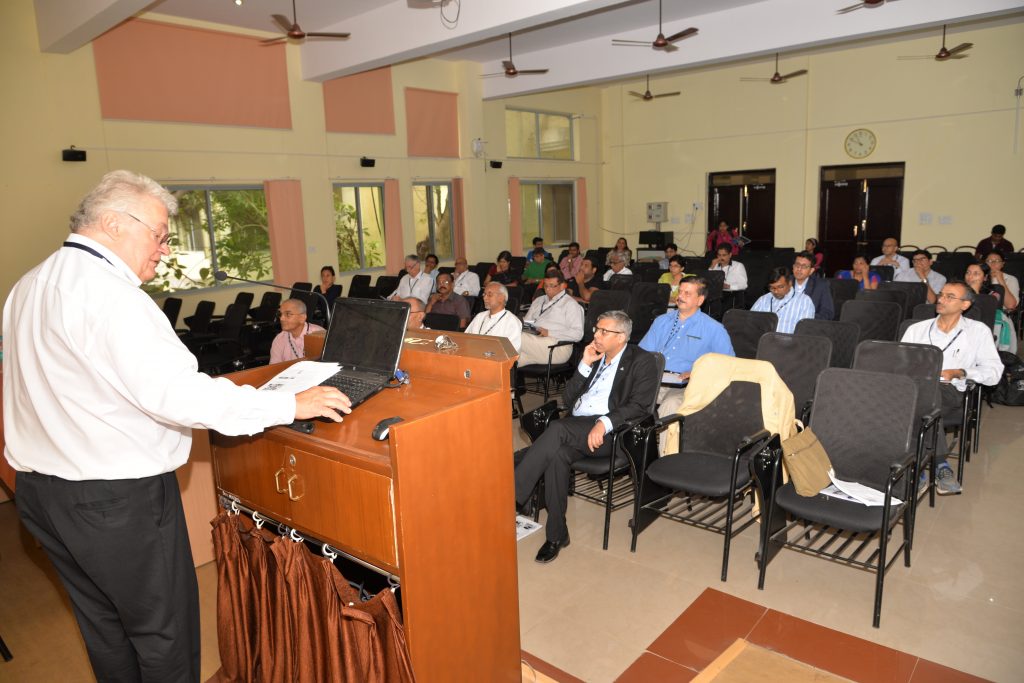
The inaugural session included a talk by Mr. M N Vidyashankar, ex-Chairman of Bangalore Water Supply and Sewerage Board (BWSSB). Mr. Vidyashankar described water challenges as being primarily problems of management. He suggested that water is an economic good, needing to be priced. He also noted large leakages in water distribution systems, and made a few recommendations such as replacing cast iron with steel piping, facilitating 24 x 7 water supply which can also reduce overall demand, and introduction of a regulatory authority for water.
The next session, titled “Context: global & local water challenges and transformation towards a sustainable water future”, included 5-minute talks on various urban water challenges from academia and government, including Dr. Veena Srinivasan (Ashoka Trust for Research in Ecology and Environment), Dr. P N Ravindra (BWSSB), Mr. S N Dinesh (Karnataka Urban Water Supply and Sewerage Board) and Dr. Daphne Keilmann-Gondhalekar (Technical University of Munich). Dr. Srinivasan noted different alternate schemes of water distribution systems, and identified critical challenges related to the sourcing of water, its delivery and supply and management of wastewater, also raising the important problems of demand management and equity. Dr. Ravindra highlighted the challenges being faced by BWSSB (population growth, climate change, ageing infrastructure and workforce, evolving demand, rising cost and depleting natural assets), and identified a few key initiatives that the organization is undertaking in a variety of areas. Mr. Dinesh took a broader state-level view, noting that urban areas in Karnataka mostly rely on surface water, and suggested a few solutions for the water crisis in the state, typically involving large-scale transfers (intra basin / intra state), and noted an inadequate degree of collaboration among government bodies dealing with water in the state. Dr. Keilmann-Gondhalekar discussed the water-food-energy nexus, pointing out the contrast between large linear systems that use resources only once, leading to significant social and environmental costs, and systems with closed loops, for example involving water reuse and energy extraction from wastewater, which can help mitigating growing water demand as well as limit pollution. Pilot projects for implementing these concepts are underway.
A panel discussion on this topic sought to clarify some of the challenges. Water scarcity is real but mismanagement is also a major factor. There is inequality in water supply in Bangalore with, for example, Cauvery river water being mainly used for supplying to the city centre. Sewage treatment is inadequate, and inadequately monitored. Use of groundwater by the various sectors is unmeasured and unregulated. Falling groundwater tables is an international problem.
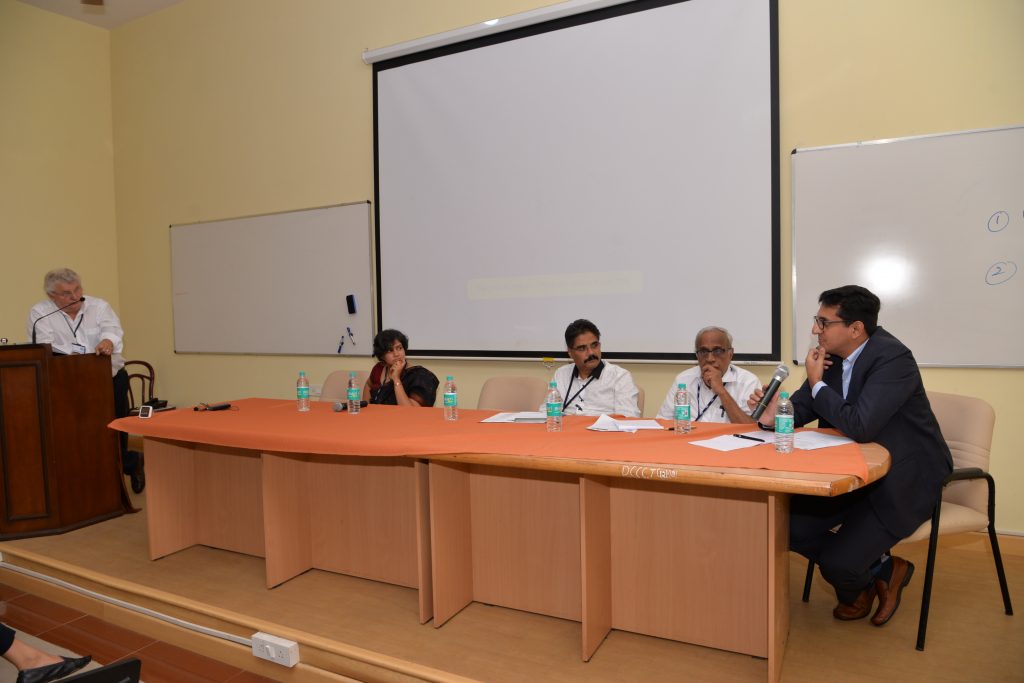
Rainwater harvesting is a solution, but should be done at the city level, because that offers more opportunity for scaling-up. Connecting storm water drains to surface bodies was suggested. There are also other methods that have been used for a long time (e.g. chain-link tanks system), and they should be examined. Another problem is the large volume of water entering the sewerage system. Reuse of treated water for non-potable needs can reduce the demand for filtered water, but this would require introduction and management of dual-piping systems. It is important to compare these costs to those of bringing water from long distances to Bangalore. Creating awareness among the public is important if these measures are to succeed. Political will and a longer time-horizon are also important. There are successful case studies of both large-scale demand reduction and interventions at the household level.
Technology for water governance is an important area of opportunity, especially with Bangalore being the IT capital of the country. The importance of technological change was highlighted. Furthermore, even though the water industry constitutes a small fraction of world GDP, water has very large impact on business and interruption costs of water unavailability can be much higher. A case-study in Africa showed that expenditure of 1 USD on water saves 4 USD of public expenditure if both public health and broader economic and business-interruption costs are included.
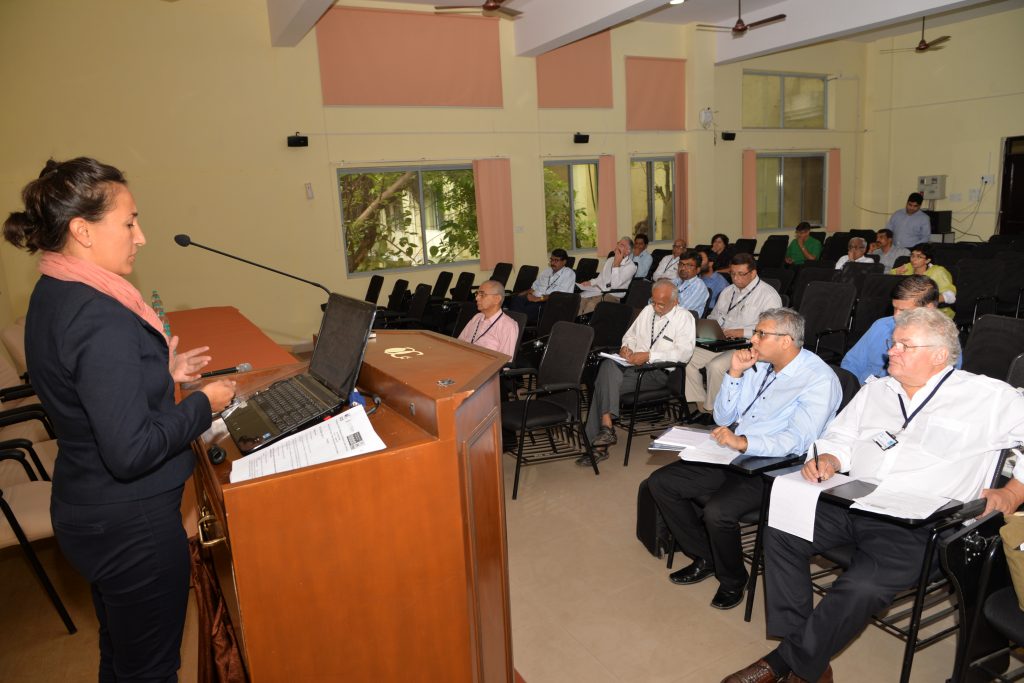
Water is an economic good but also has a critical social function, so pricing is important. However, the need for a universal entitlement of a minimum quantity of water was also noted. One challenge is that metering water at household level may be difficult. In closing it was noted that there were a number of areas for the Solution Lab to affect policy through science or new technology, but it is also important to bring together scientists and social scientists in this effort.
The next session (#3) titled “Understanding water solutions from different perspectives”, involved 5-minute talks. Mr. Nitin Verma (2030 Water Resources Group (WRG)) described the work of 2030 WRG on creating multi-stakeholder processes for solving water problems, involving analysis of needs, convening dialogues among several stakeholders, and finally formulating proposals to bring about change. Dr. Hita Unnikrishnan (Azim Premji University) described their work on urban transformation, offering an example of a lake (Dharmambudhi) that was converted to a wetland when the channels feeding it were affected by urban growth, and subsequently dried up, and now the bed sits underneath the largest bus station in Bangalore city. In addition to elaborating on the points made in the previous panel discussion, Mr N S Mukunda (Citizen Action Forum) noted the need for improving Bangalore’s underground sewerage system and pointed out the importance of better siting of sewage treatment plants to avoid public-health hazards. Ms. Kamini Issar-Ernst (FICCI and Water Future) pointed out the need for improved water literacy and that the Water Solution Lab could bring together scientists, policy researchers and practitioners. Mr. A R Shivakumar (Karnataka State Council for Science and Technology) noted challenges faced in the realm of rain-water harvesting in spite of having a policy for the household level, leading to only a small fraction of households having implemented such systems. Lack of metering, use of bottled water, and the coexistence of unregulated private tanker water supply are other challenges. In concluding this session, Prof. M S Mohan Kumar (Indian Institute of Science) highlighted the importance of integrated approaches to water, management and pricing. Specific problems are water reuse, rain water harvesting, revival of lakes, installation of new long-range pipelines (Cauvery stage 5), and dual water supply. Such measures might together be adequate to manage increasing water demand at reasonable cost, and there might not be any need to implement more expensive solutions like sea-water desalination, unlike in places where catchment areas are small.
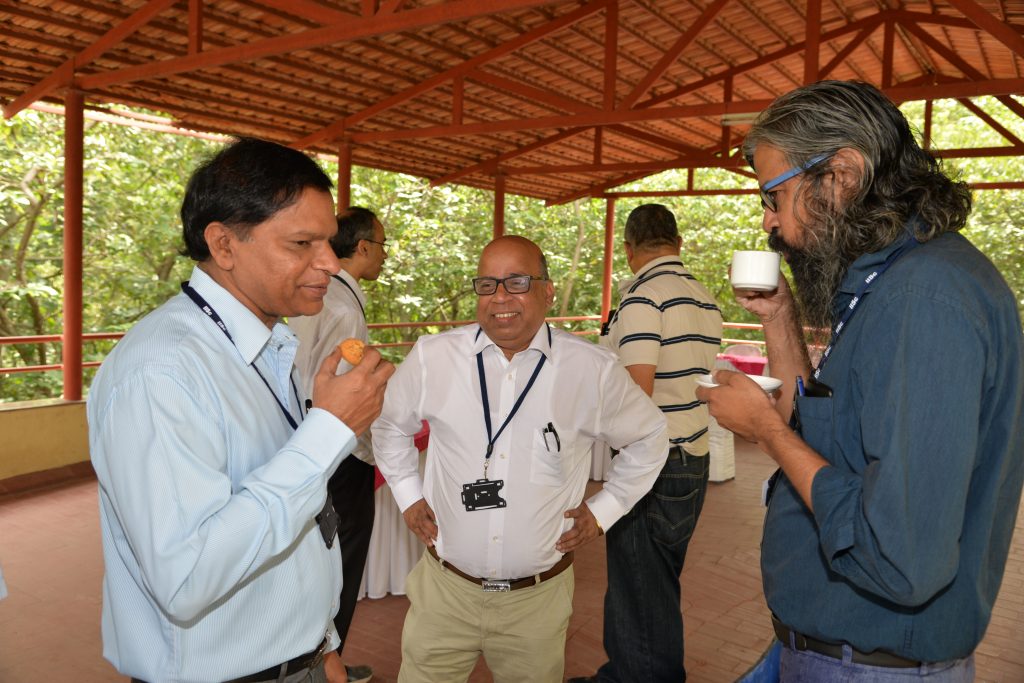
The fourth session (“Application of Water Solution Lab in India: Identifying the main areas of focus”) was a panel. It was noted that rainwater harvesting and other tools have already been developed, and it is necessary to develop a network of solutions and solution providers. It is important to recognize at the outset who will be the users of these products of the Solution Lab. The solutions would often have to be locally generated. Natural resource assessment and urban locality planning might be part of the process. Different sectors are involved, and they should be brought together to examine resource efficiency across sectors, perhaps by bringing together a small group of people to study synergies across sectors. Furthermore, problematic cities should be convinced to consider alternatives to business-as-usual, and it is important to make connections at the higher administrative (e.g. mayoral) levels. With regards to solutions, many things are already happening, and it is important to make a list of successes and failures, opening such a portal to everyone, and making it accessible digitally. Networking amongst individuals and groups, examining synergistic pathways, and integrating problems and solutions across scales would be important for the Solution Lab.
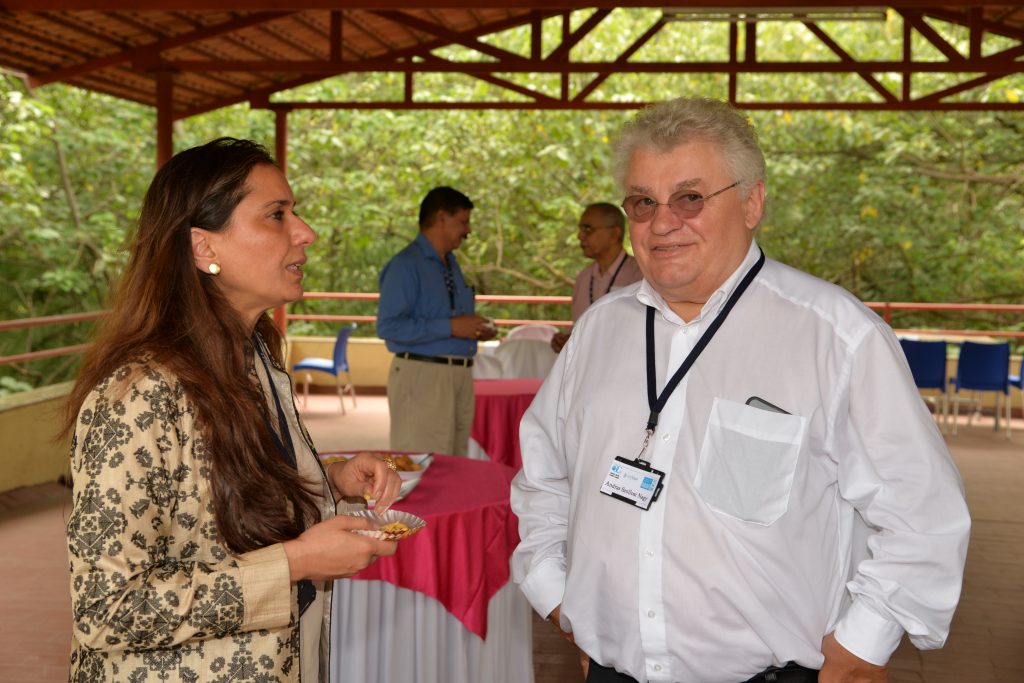
The fifth session (“Methods & Technologies for Water Solution Lab”) began with 5-minute talks. Prof. David Hamilton (Griffith University) discussed the need for a more preemptive approach towards lake restoration and described several integrated monitoring and modeling technologies for lake quality assessment. Dr. Shakeel Ahmed (National Geophysical Research Institute) outlined major challenges facing India’s surface and groundwater systems and described some technologies for future groundwater management, including heliborne geophysics that NGRI has initiated. Prof. Cheryl Desha (Griffith University) described a platform (“Digital Earth”) that can be used for increasing engagement during remote interaction. Dr. G Parthasarathy (National Geophysical Research Institute) described health hazards of hexavalent chromium in water and his work with colleagues on techniques to convert this into a benign form. Mr. Ganesh Shankar (Fluxgen Engineering Technologies Pvt. Ltd.) described the company’s Internet of Things (IoT) based system for managing water and energy resources. Prof. M Sekhar (Indian Institute of Science) described the groundwater situation in Bangalore and methods for simulating groundwater, and noted the importance of tools for better irrigation if groundwater is to be managed. Dr. Subash Chandra (National Geophysical Research Institute) noted how urban planning relies on an inadequate knowledge base and described technologies available for characterizing aquifers and noted their limitations. Prof. Nagesh Kumar (Indian Institute of Science) noted in conclusion that several techniques are available but understanding how to use them effectively is important.
The panel in this session raised several interrelated issues. Intersectoral water allocation is an important issue, and methods are needed for monitoring and assessment. Groundwater’s contribution to irrigation is increasing, and it is important to be able to provide information to local bodies about groundwater in the present and upcoming years. Providing data and information products would be valuable, but this should be provided to the lowest levels as well but this is a challenge. Lack of data is a major challenge and water level data should be made available online. There are technical solutions, for example metering water levels using IoT devices. However it was also recognized that governance problems would not sort themselves out automatically once data becomes available.
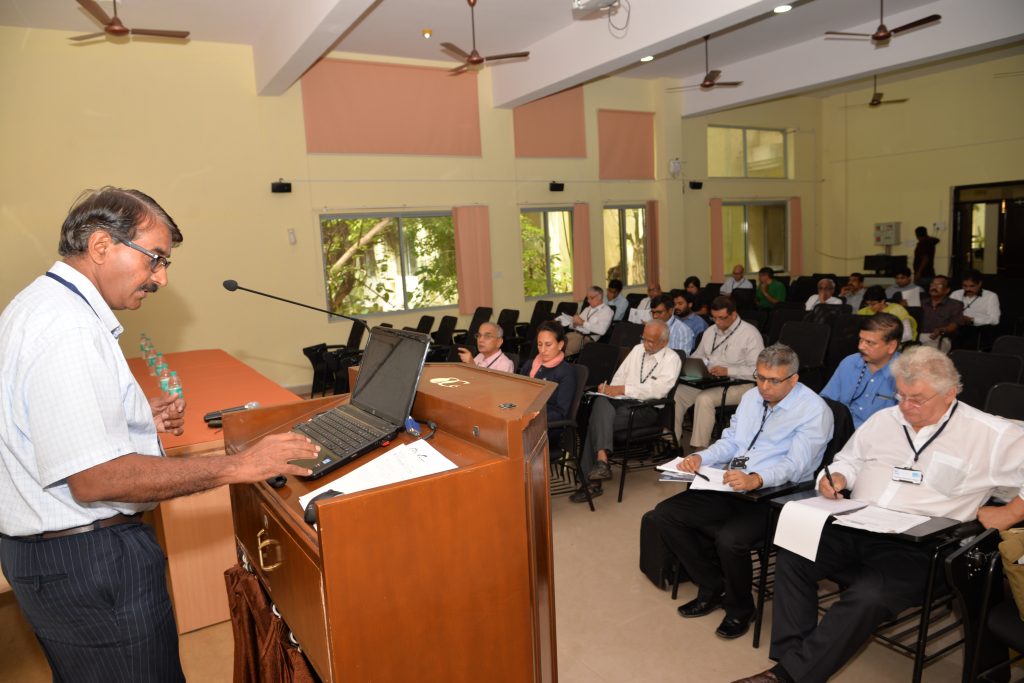
The second day began with a brief review of some goals of the Water Solution Lab by the Future Earth team, followed by Session 6 (“Frameworks for identifying solutions”). In a 5-minute talk, Mr. Vishwanath S (Biome Environmental Solutions) summarized the water situation in Bangalore, and surveyed key challenges. Two important issues are reducing inequality in water allocation and developing resilience. Waste-water agriculture is important to the economy of Bangalore’s hinterland, but this sector is informally managed, without any formal arrangements, and it would be useful to undertake risk assessment as well as explore formal arrangements for wastewater management. Dr. Hoysala Chanakya (IISc) highlighted the problem of foaming in lakes, mainly due to detergents, but also containing unidentified chemicals and such water includes pathogens. It is important to maintain an adequate time-interval between discharge of wastewater and reuse, and this requires increasing storage capacity for wastewater, and furthermore hygiene should be delinked from water to reduce the presence of chemicals in wastewater. Future sewage treatment plants should take into account the tropical bio-geochemical environment and recycle nutrients
more effectively. Mr. Rudresh Sugam (Council on Energy, Environment and Water) discussed integrated approaches for identifying urban water solutions, including social (equity, collective action and livelihoods), economic (water tariff metering, penalty for inefficient use, and incentives), science and technology (hydrological information system, climate change impact evaluation), ecological (carrying capacity of ecosystems) and political (land and water rights as well as public infrastructure) aspects. Dr. Neelima Alam (Department of Science and Technology) spoke about the water program of the department, which works towards promotion of indigenous technology (e.g. in wastewater treatment) and facilitates pilot tests of proven technologies. Capacity building is part of their work, and DST is establishing water labs in the country, and is involved in fostering collaboration both within the country and internationally. She urged different institutes to come together to conduct research on different aspects of water. Mr. Ganapathy P G (CDD Society) discussed the importance of an integrated and decentralized approach, respect for the water cycle, and closing ecological loops at different scales. He also emphasized the importance of facilitating communities’ ownership over water resources while simultaneously encouraging them to share it. Dr. Sharachchandra Lele (ATREE) listed 7 societal goals: adequacy and affordability, quality, biodiversity, equity and fairness, sustainability, resilience and democratic governance. Water provisioning is not only about import and distribution through pipe systems, but furthermore integrated thinking about local, imported, ground and treated water is important. Transparency and participation of citizens in water governance is important, and the status of the legal and regulatory system was discussed.
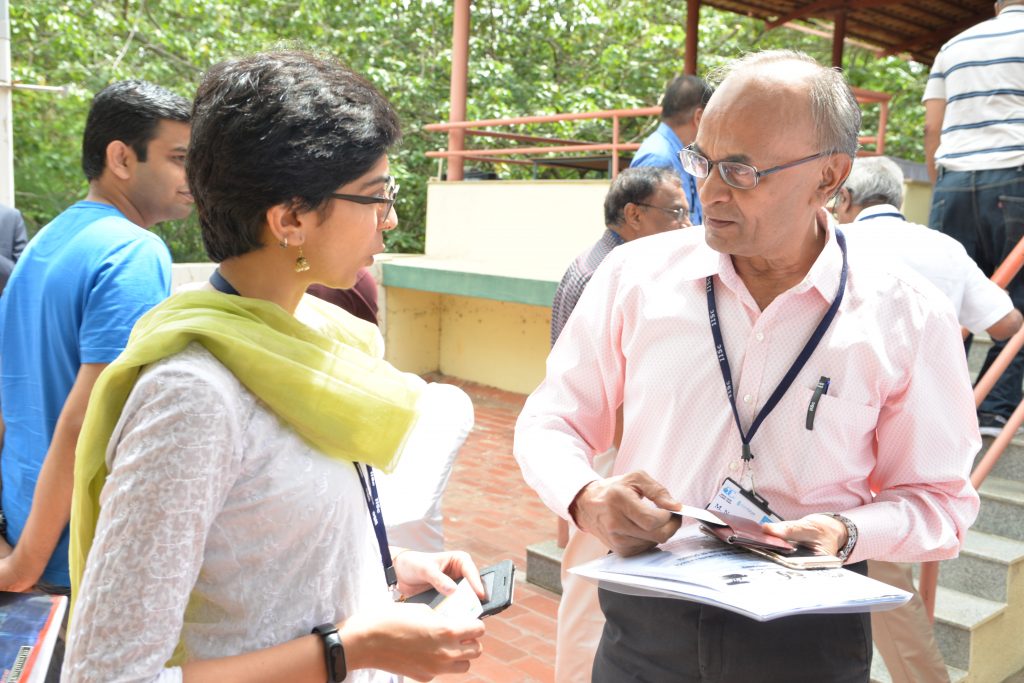
The panel discussion on the topic considered these issues further. Citizen-lead change is important, as in the case of lake restoration in Bangalore. Improvements in governance will have to be led by social movements. Private stakeholders are also important, e.g. in case of groundwater, but groundwater extraction has been promoted significantly by government. In the city, about half of water is managed outside of the government sector. It was noted that individual initiatives may by themselves be unsustainable in long run, and require government support. One area for government support is in providing adequate incentives, such as for water conservation and rainwater harvesting. Decentralized systems have limitations, but also have advantages and these unregulated spaces may give rise to innovation and leadership. Informal systems can also be more robust. There is a need for synergies between the formal (i.e. government managed or regulated) and informal sectors. Inclusive governance and mechanisms for adoption and dissemination of solutions are required. Four areas of collaboration are modeling, measuring, monitoring and management.
The next session (“Towards implementing Solution Lab in India”) was a panel discussion. The chair, Prof. P P Mujumdar (IISc), asked the panel to identify whether the water solution lab would be exclusively a networked structure for solution identification or also function as a funding agency. He also raised the issue of what role it could play in capacity building. It was noted that there are many new ideas in the water domain. The Solution Lab could play a role in testing how these ideas can be implemented. It would work as a place to reduce the gap between science and policy or governance, and participate in joint model building. Comprehensive assessments of water crises led by local experts would of course be a first priority. Knowledge sharing and collaborative thinking could be facilitated. It was pointed out that the government of India has already facilitated similar initiatives at the national level where water-related hot-spots were identified all over India and maps developed. The Water Solution lab can extend this to include global collaborations. Interactions between river basin scale, local scale, and urban watershed scale in considering urban water access could be addressed as part of the Solution Lab.
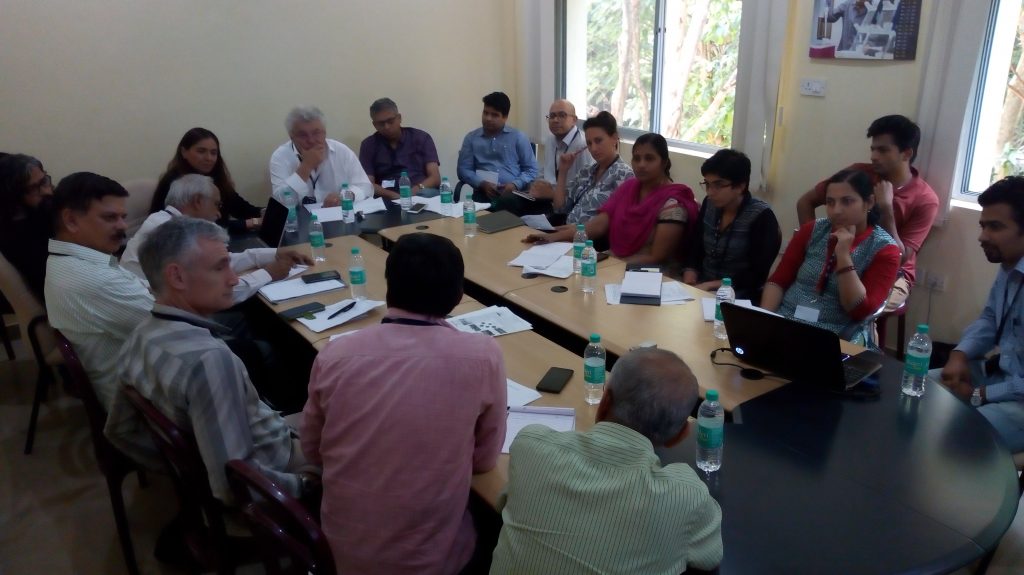
Stakeholders should be involved from the outset. While the Solution Lab cannot alter social constraints, it can help assess strengths and weaknesses of water systems and highlight important constraints. It can include two parts, one functioning as knowledge hub and the other as the implementation hub. Questions were raised about the role of the lab, for example whether the lab would become an advisor to government processes. It was also inquired whether the lab would only focus on large scale interactions or also address in detail the problems of local areas. It was clarified that the lab would not work in advisory capacity, but would instead seek to bridge knowledge and practice while identifying solutions.
The next session included discussion on various aspects of implementing a Water Solution Lab: product design, methodologies, stakeholder involvement, and understanding impact. Five major characteristics of the Solution Lab would be strategic thinking, future orientation, integrated study, interdisciplinary nature and independence. Stakeholders’ involvement and participation was identified as the key to design the program. It was suggested that the lab would play a catalytic role in long term strategic planning and fostering a multidisciplinary problem-solving culture. Solution matching and assessment and dissemination would be important. For example, in case of arsenic in water, even after knowing the issues being faced by Bangladesh the states located along the Ganga are heading towards the same problem. There are already a few portals available for disseminating this type of information, such as India water portal, Arsenic Knowledge and Action Network and Fluoride Knowledge and Action Network. Water Solution Lab would have to assist in disseminating the information and additionally distinguish itself from these existing forums. Long term thinking and data awareness are important areas. The water-food-energy nexus is important, and water is also related to public health, and the lab should adopt a nexus mode of thinking. New technological solutions like smart pipes can be used to identify polluters. Database creation and monitoring could be an important component. IoT can play a major role in data collection. Low cost reliable sensors with communication facilities can play a major role in building the database. Data assimilation would be an important aspect.
Researchers, civil society groups, builders, planners, lake rejuvenation groups, students (law, civil engineering, hydrology), and entrepreneurs would be stake holders. It was noted that the Solution Lab should become a hub for future-oriented studies. Capacity building is also important. The issue of data misuse and data ethics should be considered.
In closing, the relevance of the lab from the perspective of the Indian government was discussed, and ideas solicited. These are: smart cities also should include smart water systems; private-sector innovation and startups, including in IoT but also in other technologies, would be encouraged; capacity building in various aspects of water management can occur; it is important to manage health impacts of water; the lab can help in meeting sustainable development goals; the integrated knowledge provided might help in negotiating international agreements (e.g. Indus water treaty); it can help closing the gap between science and water-related decision-making / policy; and bring international funding for helping solve India’s water challenges.
All Photos Courtesy Of: Indian Institute of Science
News Item Courtesy Of:
Ashwin K Seshadri
Indian Institute of Science